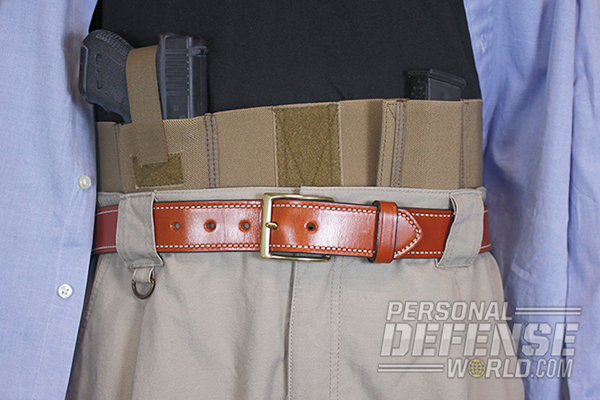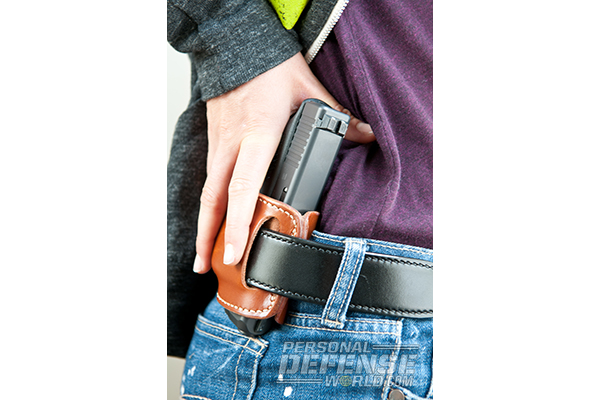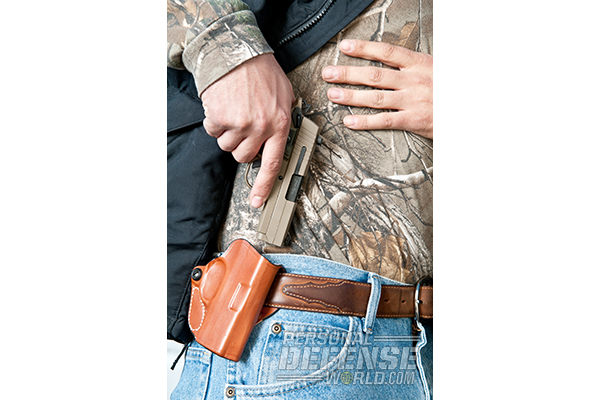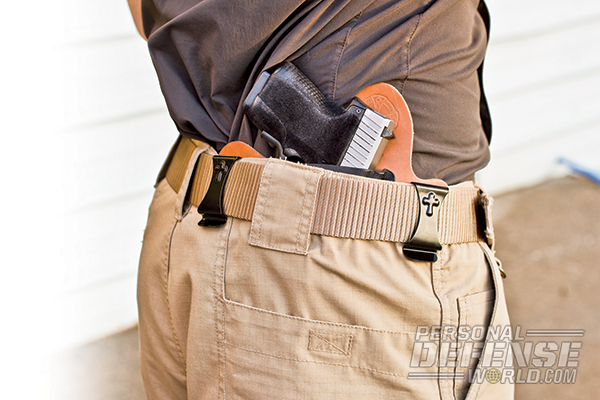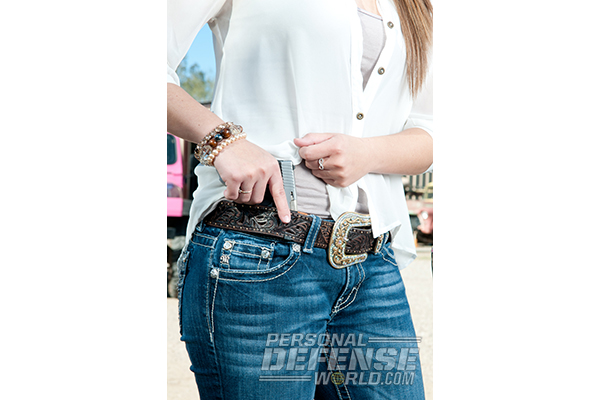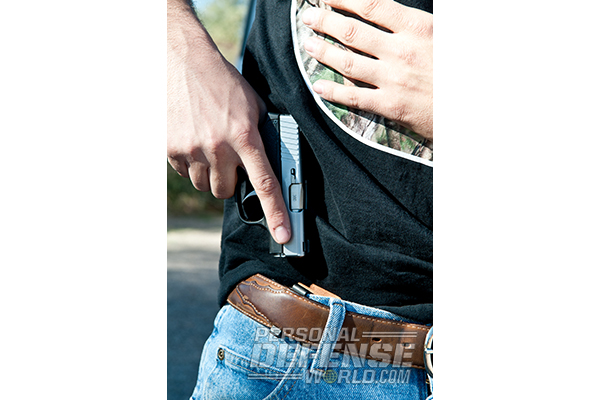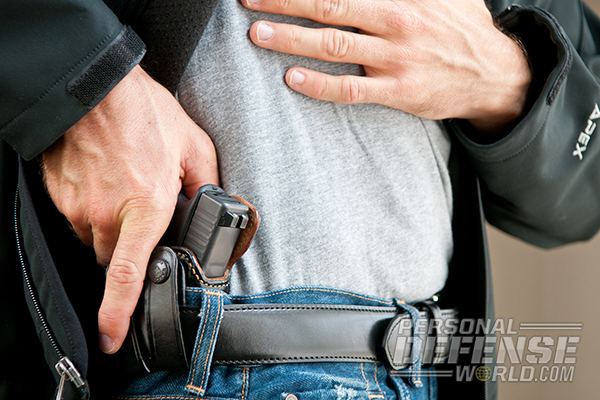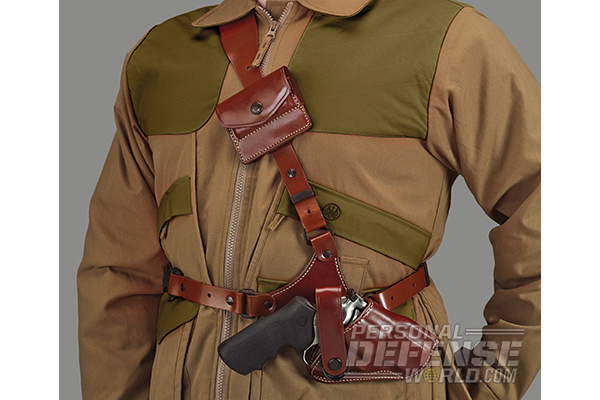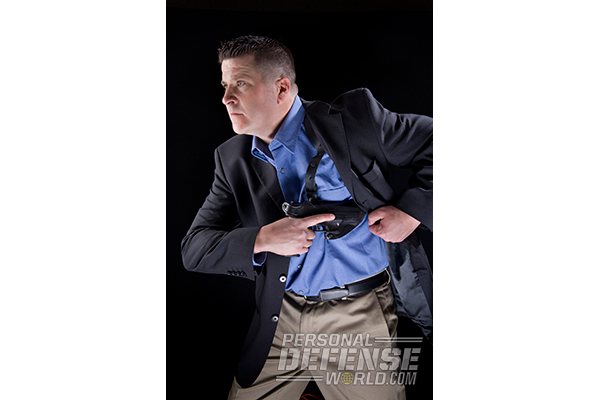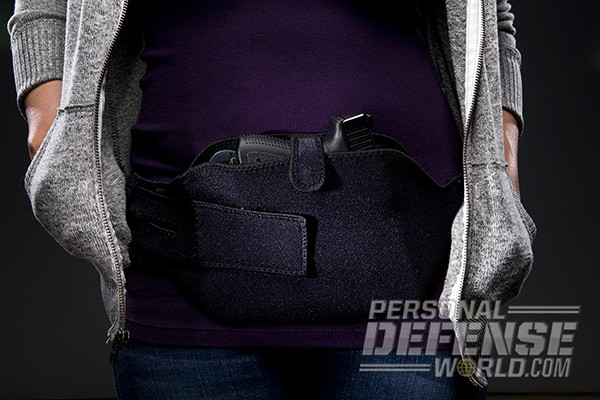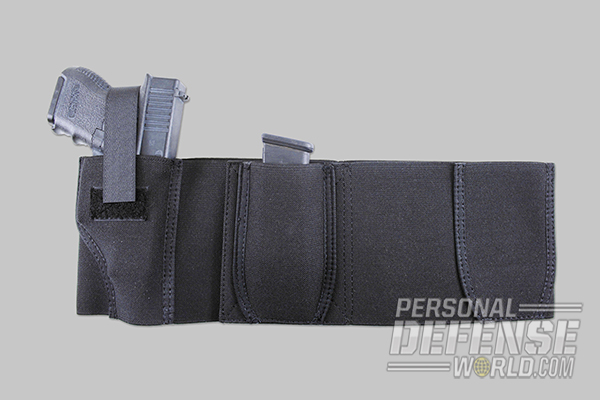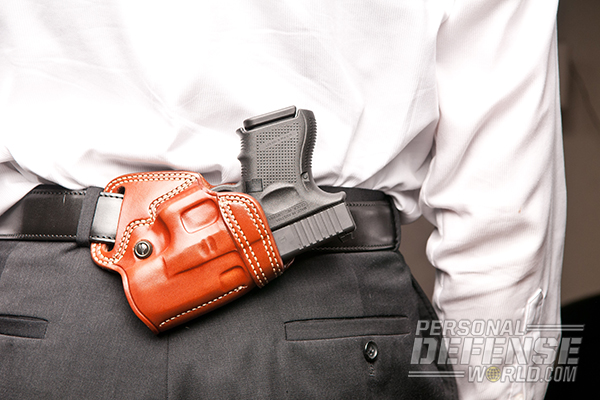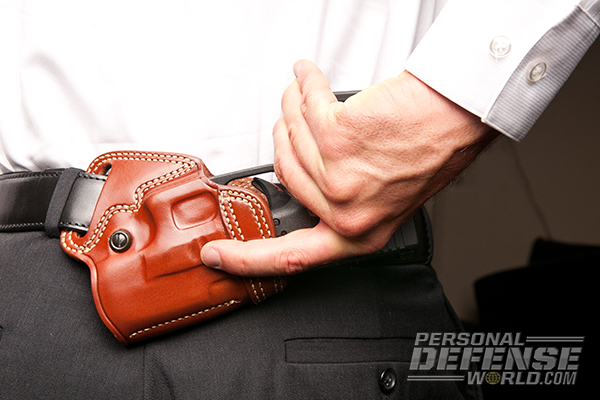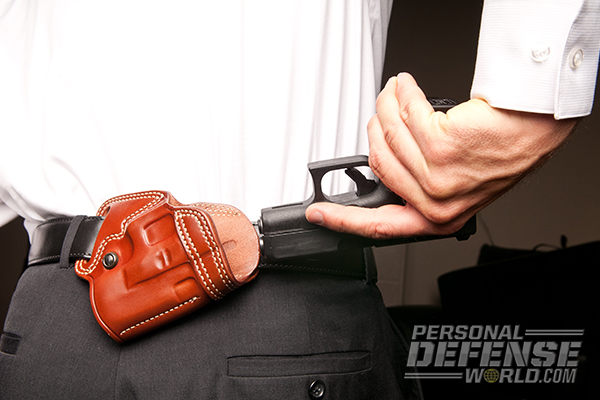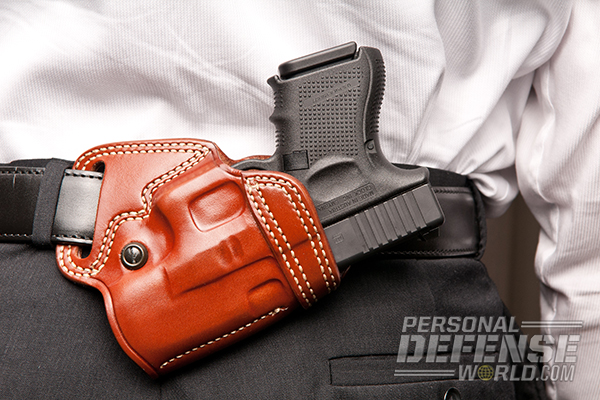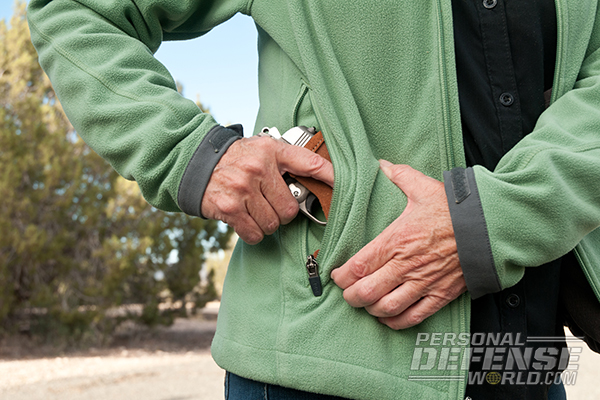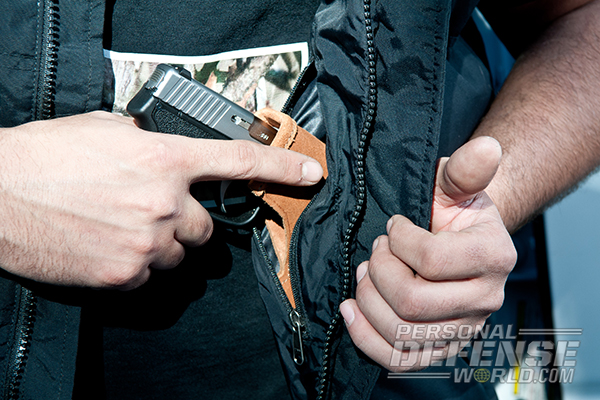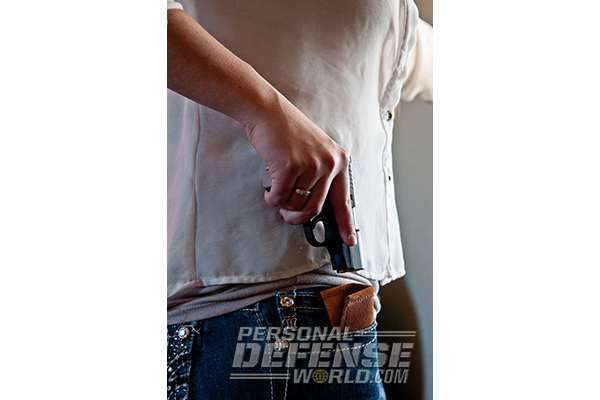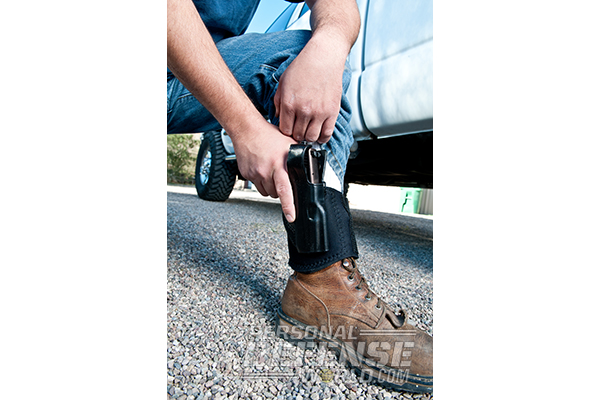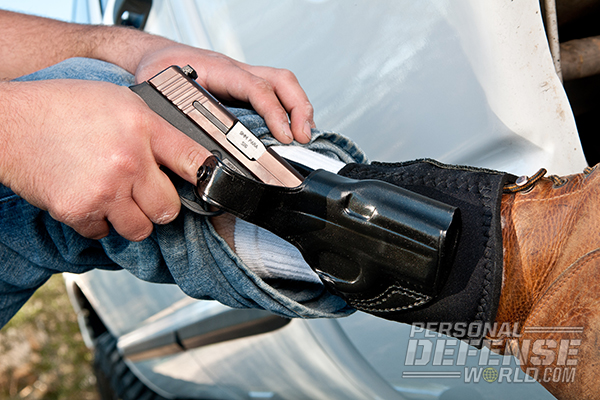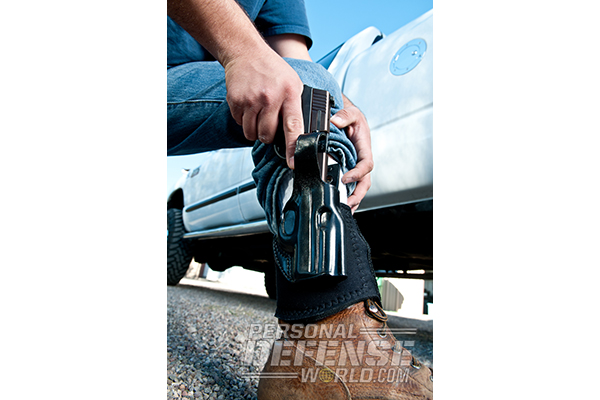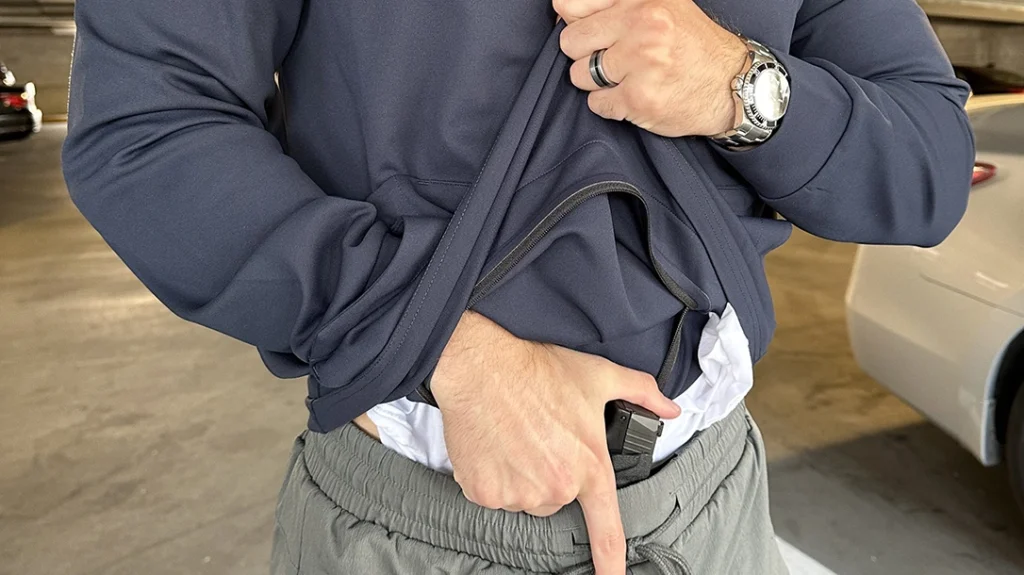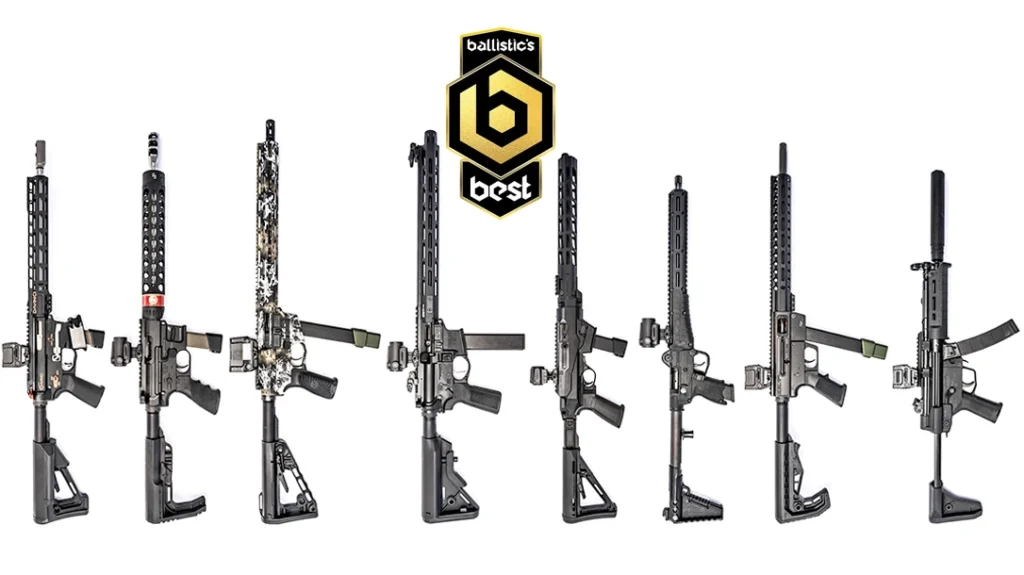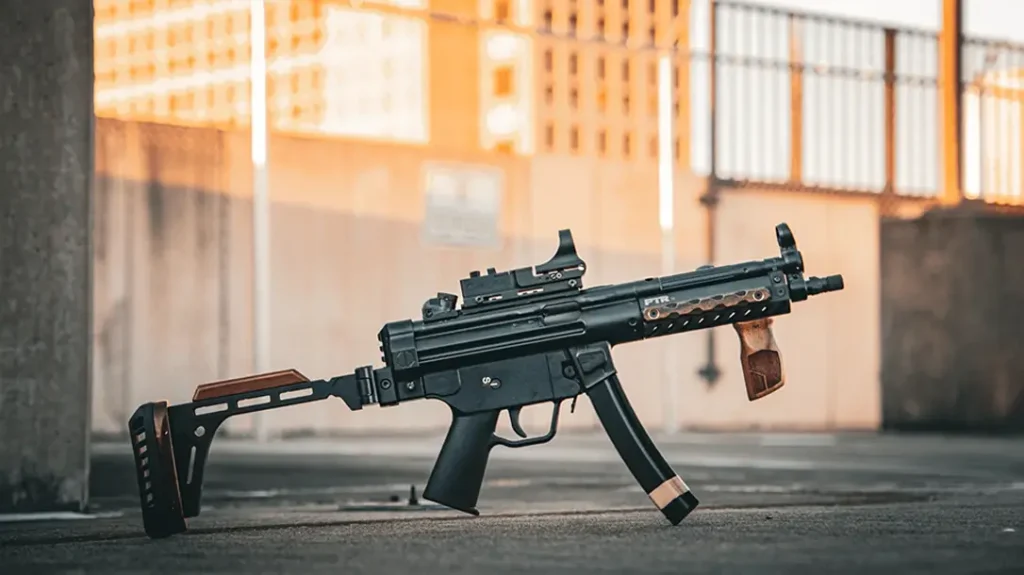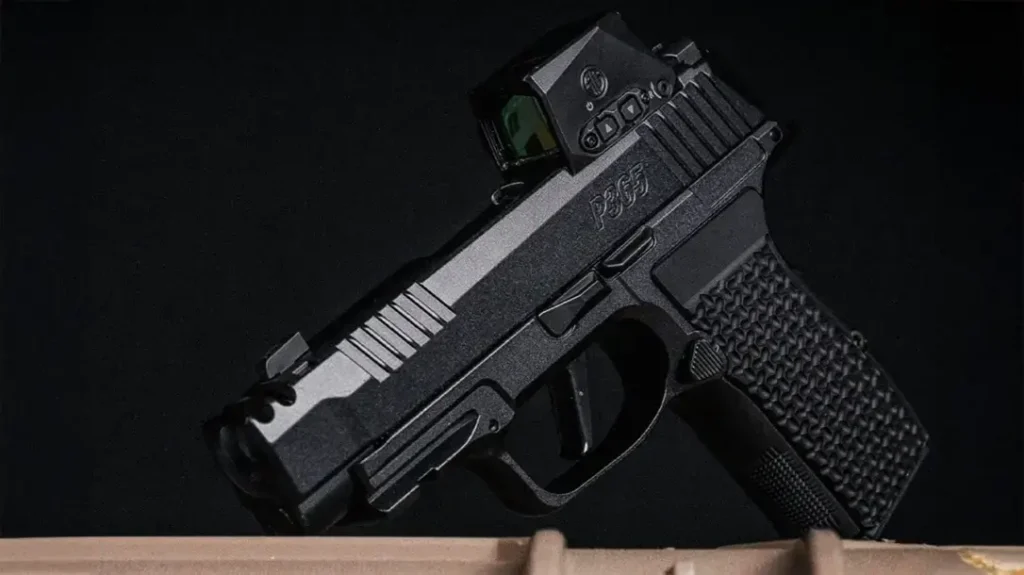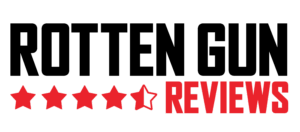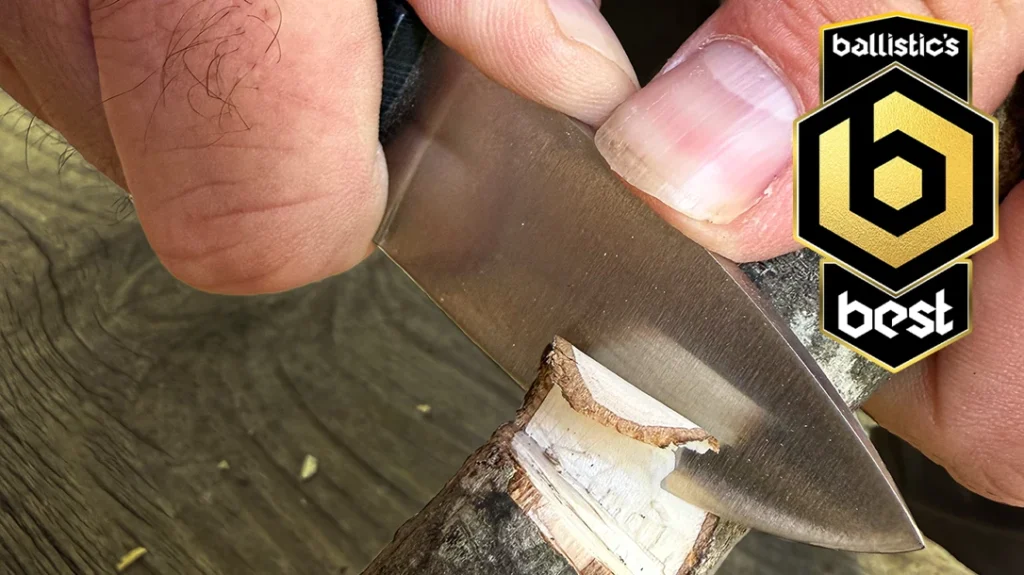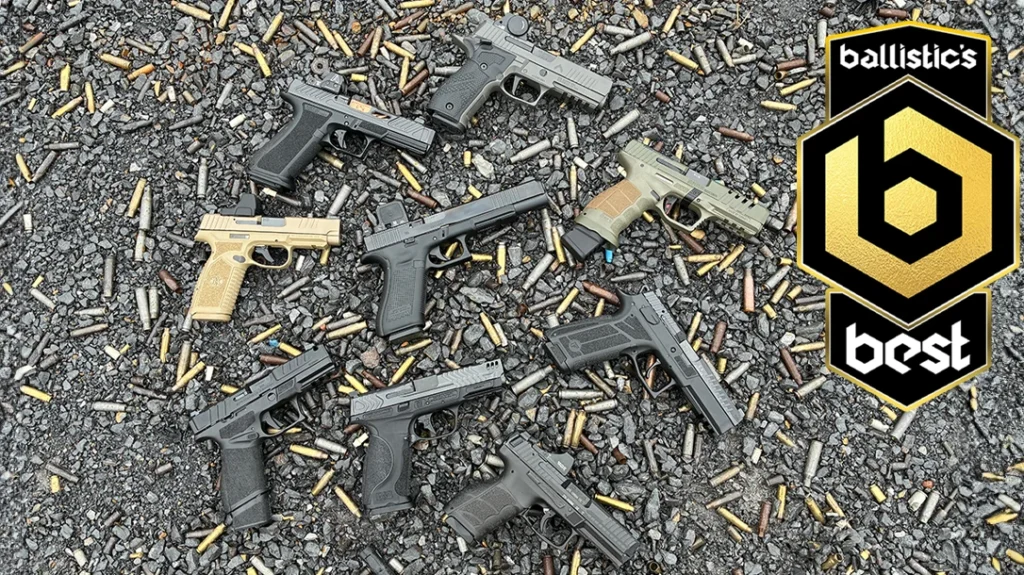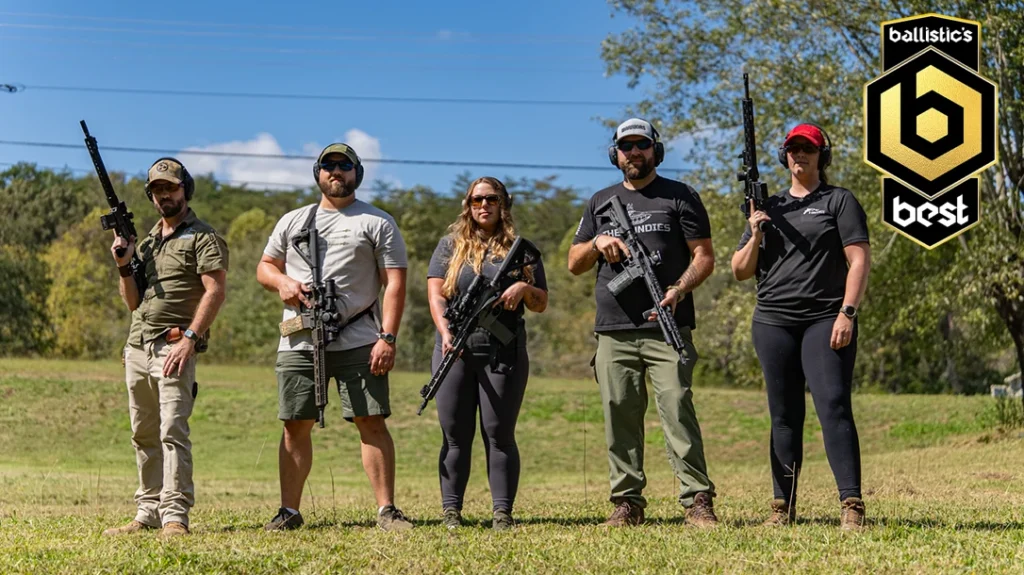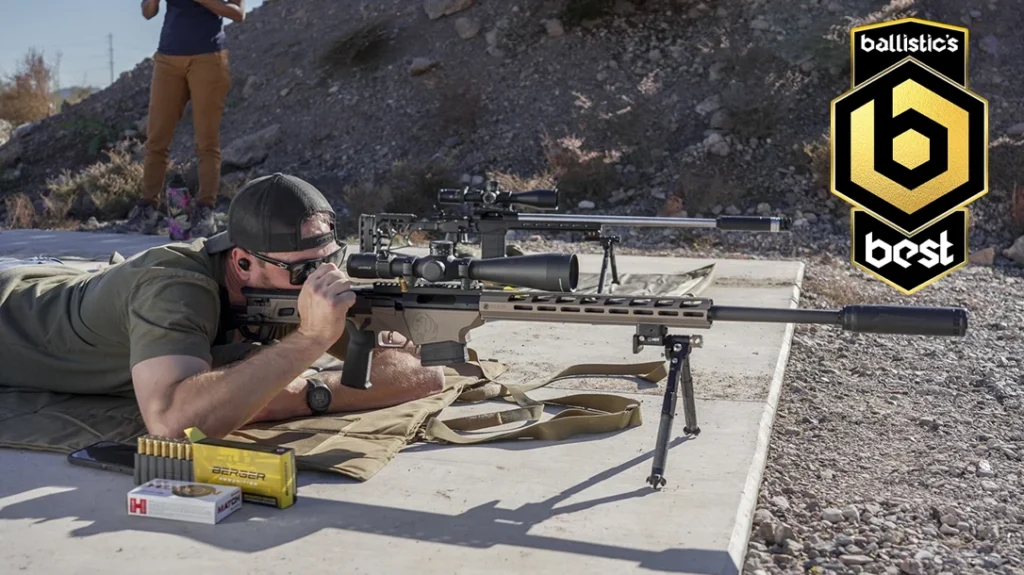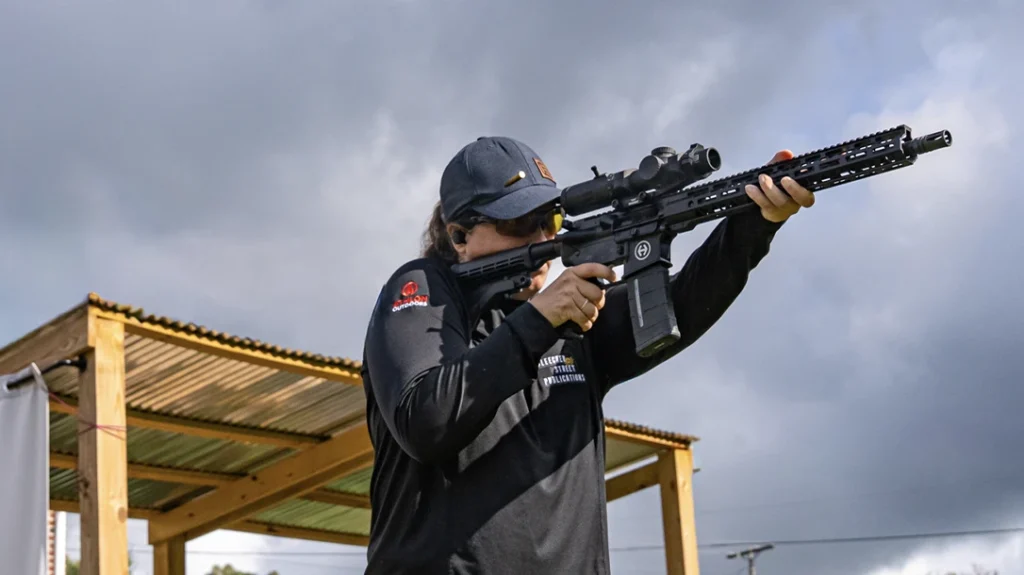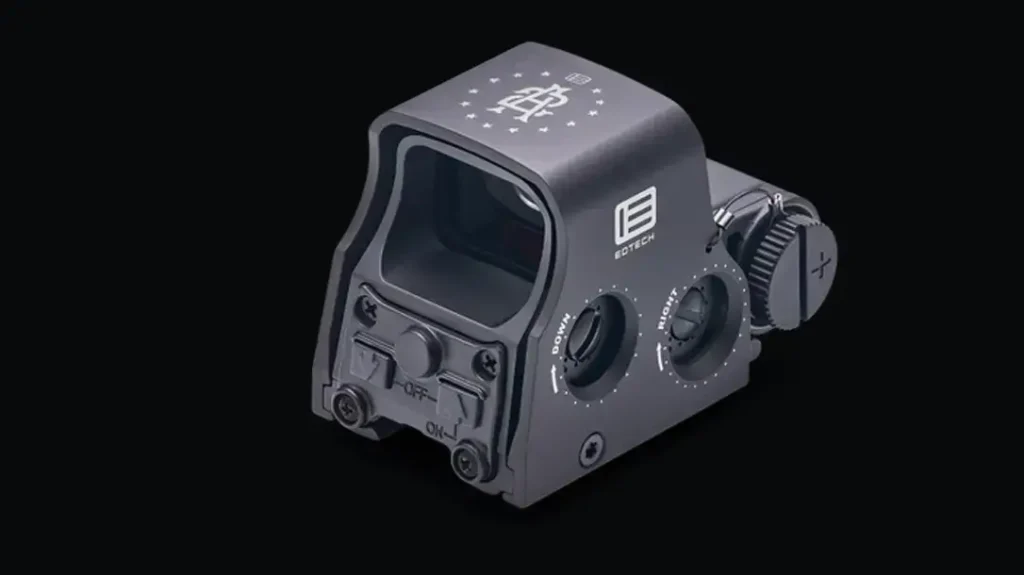Holster options abound. When I set a record for the Panteao Productions video Massad Ayoob on Concealed Carry this year, I used just about all of those methods to hide more than 50 loaded handguns at once.
Each of us has our own preferences. They may relate to body shape and condition, or habituation, or job regulations, or wardrobe … or all of the above, and more. Some follow the rule of the great holster designer and master of gun concealment, John Bianchi. “Bianchi’s Law” states, “same gun, same place, all the time.”
Some others have found it necessary to have a wardrobe of holsters (and of carry guns, the so-called “carry rotation”) to accommodate different needs at different times. Let’s look at some of the options.
Advertisement — Continue Reading Below
For more tactics on how to covertly carry your weapon, check out “Everyday Concealment Holster Options” from the May 2014 issue of COMBAT HANDGUNS!
Strong-Side Hip Carry
Advertisement — Continue Reading Below
This is the most popular holster configuration by far. For most of the 20th century, it was standard military carry. It has long since become standard police carry as well. Range masters like it because it tends to keep the gun muzzle on a safe downrange axis between holster and target. The great majority of so-called “security holsters” are designed to be worn on the strong-side hip.
We all choose our methods for personal reasons. It’s been my default for most of my life; I started on the strong-side hip as a kid. Every uniform holster I’ve worn as a police officer, from 1972 to now, has been in that location. It was mandated for matches I competed in heavily, such as PPC (Police Pistol Combat) and IDPA (International Defensive Pistol Association) competition. Most of the holsters I’ve accumulated are designed for this carry. These factors led to habituation, and to a high comfort level.
Advantages: Very fast, at least for males.
Advertisement — Continue Reading Below
Cons: Females, with a proportionally shorter torso and higher, more rounded hips, may find it less optimal. Tends to “print” the gun butt when bending forward. May be difficult for those with shoulder injuries or a limited range of upper limb movement.
Appendix Carry
Advertisement — Continue Reading Below
With the butt to the rear on the dominant-hand side between hip and navel, this hides well on many people, though concealment requires a closed-front garment. That’s slower than the gun hand sweeping back an open-front jacket or vest, but appendix carry makes up for that with a shorter arc of access that can allow great speed.
Advantages: Easier to protect against a gun grab, particularly one that comes from behind. Some close-quarter fighting experts find it easier to draw from there “in a clinch.” It’s a good orthopedic option for those who find hip carry uncomfortable.
Advertisement — Continue Reading Below
Disadvantages: Forbidden in many forms of competition. Uncomfortable for many, particularly when bending or sitting with long-barreled guns. Gun muzzle is pointed at private parts and femoral artery, which many find disconcerting at best. This in turn can lead to a hesitant draw, stealing appendix carry’s speed advantage for those who feel that way.
Crossdraw Carry
Advertisement — Continue Reading Below
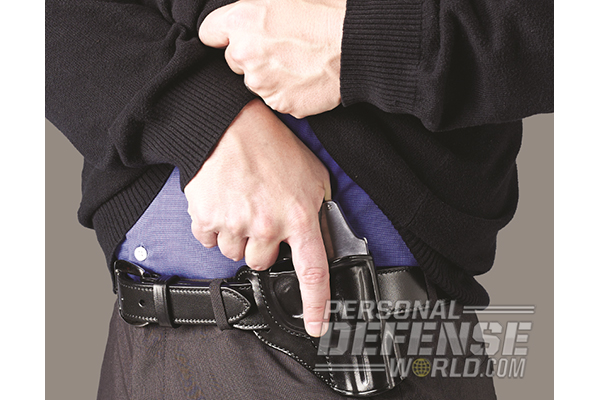
A hallmark of the Old West, crossdraw carry puts the holster on the front of the waist, across the body from your gun hand. The gun is holstered butt-forward.
Advantages: Crossdraw makes the gun very accessible to either hand. It lets a right-handed driver in an American-style vehicle bring the gun quickly up in line with the window to fend off a carjacker, and even a banker behind a desk will find it faster to access than a hip holster, particularly if seated in an armchair. By leaving heavy garments just partially open during inclement weather, it’s easy for the hand to knife through a long, buttoned coat and still quick-draw the handgun.
Disadvantages: The butt is presented to the opponent in a close-range, face-to-face situation, one reason police got away from crossdraw uniform holsters long ago. Reach is proportionally longer and less viable for those with large bellies or broad shoulders. Also, it is very easy to dangerously “sweep” others on the firing line with the muzzle, one reason it is forbidden at so many training academies and competition venues.
Advertisement — Continue Reading Below
Shoulder Carry
Advertisement — Continue Reading Below
The shoulder holster is essentially a crossdraw holster worn higher up and suspended on a harness hanging from the shoulders, hence its name. It requires an open-front concealment garment that should be at least partly unfastened to afford quick access. Outdoorsmen have long found it an excellent way to carry a heavy handgun for long periods: weight is taken off the belt, and the coat protects the gun from inclement weather.
Advantages: The quick access stated above, for one thing. Pretty good access to the weak hand. Works great for ladies, and when male or female fashions preclude a heavy “dress gun belt,” the self-suspending nature of the shoulder harness eliminates that concealment problem.
Disadvantages: Tough to reach if the mugger has you in a bear hug. Those of us who look more like the before picture than the after picture in the body-builder ads may need smaller guns: It’s the depth of the chest that’s largely hiding the shoulder-holstered handgun. Also, you can’t just pull out the shirttail and hide the gun as with some belt holsters: The shoulder rig demands a concealing garment.
Belly Band Carry
The belly band is basically a 4-inch-wide strip of strong elastic with holster pouches sewn in. I’ve carried snub .38s and .357 Magnums in them in a front crossdraw position easily when maximum discretion was needed, and a full-size gun can be worn in one behind the hip. Either way, the shirt tucks in over it. Front crossdraw is accessed by knifing the hand through an un-done shirt button; for hip carry, you have to rip the shirt up and clear first.
Advantages: Coatless concealed carry with tucked-in shirts and even neckties. (The tie actually hides a pre-unfastened button in front crossdraw carry). No added bulge from leather thickness. They’re nicely flexible, and so well suited to use while exercising.
Disadvantages: Extremely difficult to re-holster, and all but impossible to do so “tactically.” Most are made of fabric only, which allows body sweat to directly attack and rust the gun. Tenifer or hard chrome gun finishes recommended.
Small Of The Back Carry
Placing a holster in the small-of-back (SOB) position has been a popular option since the 1950s. A TV detective carrying there would regularly be patted down by bad guys who would miss the gun, something unlikely in real life. Various holster models allow for a straight-up position, a sharp tilt toward gun hand, or even horizontal carry with the butt pointed straight up.
Advantages: Easy to reach with either hand. Not visible from front even with open coat.
Disadvantages: Very difficult to defend against “gun grabs.” Not terribly fast to access. Can be extremely uncomfortable when seated or supine. And, if you fall back on your holster, the potential for spinal injury high, giving new meaning to its “SOB” designation.
Pocket carry is a bit of a misnomer. True, the gun goes in the pocket, but no gun should go into a pocket independently of a holster (moreover, nothing but the gun and its holster should be put into the designated pocket). It’s imperative that the triggerguard area not be exposed, and that there be nothing else in the pocket that could inadvertently trip the trigger.
Advantages: The hand can be on the gun and ready to draw when danger threatens, usually without the bad guy being the wiser. So long as the gun is concealed, no additional garment is needed in hot, muggy weather to hide the weapon.
Disadvantages: If you don’t want the firearm to peek out, bulge or sag, you’re going to have to carry a small, light handgun. The exception is specialty clothing. And remember, if you begin with your hand outside the pocket, this ain’t the best start position for winning a quick-draw contest. Weak-hand access is poor.
Since the first mounted soldier stuffed a matchlock into his boot, ankle carry has been with us. Ankle holsters aren’t always comfortable: There’s going to be a lot of “try this one and see” with ankle carry. My own preferences are the Galco Ankle Glove and the offerings of Alessi and DeSantis.
Advantages: Surprisingly accessible when seated, or when down on one’s back. Leaves the pockets free.
Disadvantages: The hardest to reach from a standing position. As noted, ankle holsters are among the toughest to adapt to in terms of comfort factor. Ankle holsters offer very heavy exposure to dust and dirt, and are largely incompatible with snowy/muddy environments. Restriction above the ankle joint can exacerbate medical conditions relating to circulation or arthritis. Requires loose cuffs—“boot-cut” with jeans or cords, straight-leg uniform pants or work pants, or the ever popular “men’s sack suit.”
Final Thoughts
No, I haven’t covered everything. Not hybrid holsters. Not the ones that allow you to conceal a weapon with a mounted flashlight. There wasn’t space; you need a book for that. Oddly enough (shameless self-serving plug here), I’ve written one for you: Gun Digest Book of Concealed Carry, Second Edition, currently available from F&W Publications, Amazon or Barnes & Noble. But I hope the foregoing has been of use. While you’re at it, we were able to get a lot of useful tips into the Massad Ayoob on Concealed Carry video, too.
